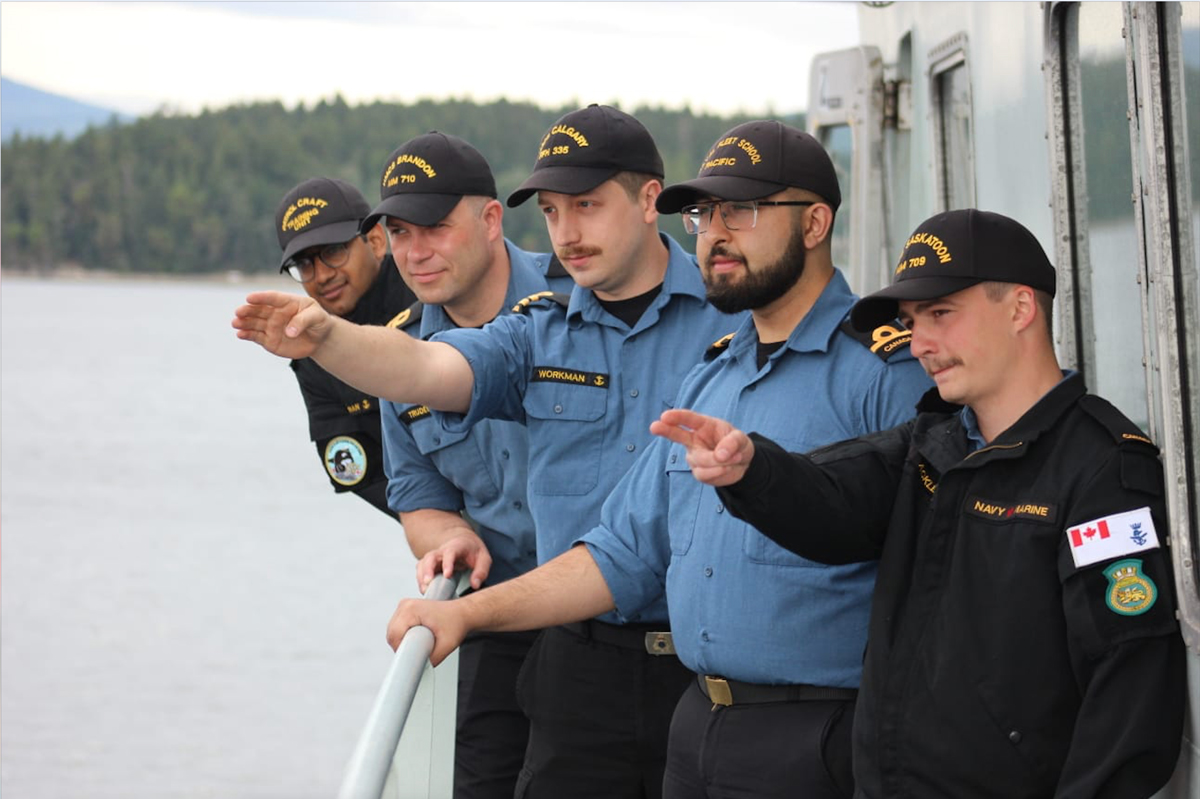Frigate, Patrol Craft Units hold Force Generation sail
By Lookout Production on Jul 15, 2022 with Comments 0
Kateryna Bandura
Editor
—
Junior Officers and junior sailors in between formal courses at Canadian Forces Base (CFB) Esquimalt completed On the Job training packages in an initiative between a frigate and three ORCA vessels.
“Because ORCA ships are smaller and less complex to operate, they help better focus on developing the basic skills in a safe environment, and training can occur at a reasonable speed to allow proper absorption,” said Lieutenant-Commander (LCdr) Louis-Phillippe Trudel, the Officer in Tactical Command of the three ORCA vessels, and for Officers in Charge (OIC) training development on PCTU Cougar.
The Force Generation sail, organized by HMCS Calgary and ORCA ships Cougar, Grizzly, and Raven, prepared 72 participants, including four in Navigation training, three in OIC training, and 20 for basic Naval Warfare Officer training. This is a first in a long time the fleet employed the ORCA vessels for Force Generation training. LCdr Trudel said normally ORCAs are used by the Naval Officer Training Centre Venture and by Naval Reserves on weekends.
The idea behind the initiative was to allow junior officers to progress their training, to mentor future navigators and OICs, and to support the training of junior sailors at sea.
“The program offered training to junior members in a safe and practical environment, while allowing qualified personnel to build their skills and progress to the next levels of their careers,” LCdr Trudel said.
The ships trained over three weeks from June 13-30 in the Gulf Islands, Strait of Georgia, and Puget Sound.
A navigator in HMCS Calgary and the project’s architect, Lieutenant (Navy) Taylor Workman said training such as this could take two to three times longer on ships whose mission is not solely Force Generation. Sometimes Force Generation sails can be extremely challenging, but Lt(N) Workman said at least four people asked if there would be another similar sail.
“We got to show junior sailors they could have fun while doing the business at sea,” he said. “I personally haven’t seen too many circumstances where sailors were asking to stay at sea after three weeks away from home.”
The Training
The participants performed the duties they usually would in a larger ship under favourable training circumstances. The ships were crewed with qualified officers working towards their next milestone, as well as sailors building experience in their specific fields.
The sail offered a lot of hands-on training to help develop navigation skills: the training challenged bridge watch keepers to build navigation passages while at sea.
The Officers in Charge (OIC) training included ship handling, emergency responses, and leadership at the captain level. It is the required qualification to be in charge of an ORCA vessel, LCdr Trudel said, adding that gaining additional qualified OICs will improve the fleet’s capacity.
The project also optimized concurrent activities to help junior sailors work on their qualifications. These included small boats training, radar operation training, and general seamanship to develop new sailors.
LCdr Trudel believes the Force Generation sail was a successful endeavor, with tangible benefits to the Royal Canadian Navy.
“One-on-one mentorship of the more senior participants allowed them to improve their mariner and leadership skills. The junior officers aboard will continue their training towards becoming qualified Naval Warfare Officers, and all will return to the fleet with more experience,” he said.
Filed Under: Top Stories
About the Author:






